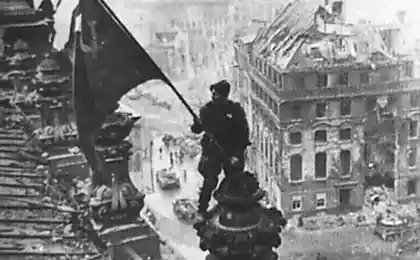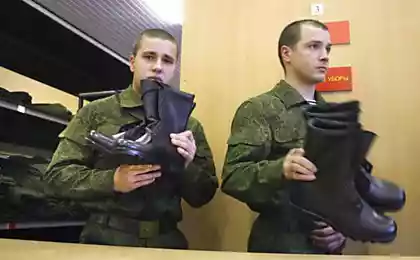355
15 main mysteries of Russian monarchs
Where did the Muslim ligature appear on Alexander Nevsky’s helmet, why did the eagle appear on the seal of Ivan III, did Ivan the Terrible kill his son? The history of Russian monarchs is full of mysteries. Who was Rurik?
Historians never agreed on who Rurik was. According to some sources, they could be the Danish Viking Roerik of Jutland, according to others, the Swede Erik Emundarson, who raided the lands of the Balts.
There is also a Slavic version of the origin of Rurik.
Historian of the XIX century Stepan Gideonov associated the name of the prince with the word "Rerek" (or "Rarog"), which in the Slavic tribe of Obodrit meant falcon. During the excavation of early settlements of the Rurik dynasty, many images of this bird were found.
Did Svyatopolk kill Boris and Gleb? One of the main “anti-heroes” of the history of Ancient Russia was Svyatopolk Okayanny. He is considered the murderer of the noble princes Boris and Gleb in 1015. Folk etymology connects the nickname of Svyatopolk with the name of Cain, although this word goes back to the ancient Russian “kayati” – to repent.
Despite the accusation of murder of princes, the name of Svyatopolk was not removed from the family list of princely names until the middle of the XII century.
Some historians, such as Nikolai Ilyin, believe that Svyatopolk could not have killed Boris and Gleb, since they recognized his right to the throne. In his opinion, the young princes fell victim at the hands of soldiers Yaroslav the Wise, who claimed the Kiev throne. For this reason, the name of Svyatopolk from the generic list of names was not removed.
Where did the remains of Yaroslav the Wise disappear? Yaroslav the Wise, the son of Vladimir the Baptist, was buried on February 20, 1054 in Kiev in the marble tomb of St. Clement. In 1936, the sarcophagus was opened and was surprised to find several mixed remains: male, female and several bones of the child.
In 1939, they were sent to Leningrad, where scientists from the Institute of Anthropology established that one of the three skeletons belonged to Yaroslav the Wise.
However, it remained a mystery who the other remains belonged to and how they got there. According to one version, the only wife of Yaroslav, the Scandinavian princess Ingegerde, rested in the tomb. But who was Yaroslav the child buried with him? With the advent of DNA technology, the question of opening the tomb rose again.
The relics of Yaroslav - the oldest surviving remains of the Rurik family, had to "answer" several questions. The main of which: the Rurik family - Scandinavians or still Slavs?
On September 10, 2009, looking at the pale anthropologist Sergei Szegeda, the staff of the St. Sophia Cathedral Museum realized that things were bad. The remains of Grand Duke Yaroslav the Wise disappeared, and in their place lay a completely different skeleton and the newspaper Pravda for 1964.
The mystery of the newspaper was solved quickly. It was forgotten by Soviet specialists, the last to work with bones.
But with the “self-appointed” relics, it was more difficult. It turned out that these are female remains, and from two skeletons dating from completely different times! Who these women, how their remains ended up in the sarcophagus, and where Yaroslav himself disappeared, remains a mystery.
Where is the Muslim ligature on Alexander Nevsky's helmet?
On the helmet of Alexander Nevsky, in addition to diamonds and rubies, there is an Arabic script, 3rd verse of the 61st surah of the Quran: “Enjoy the faithful with the promise of help from Allah and quick victory.”
In the course of countless inspections and examinations, it was established that the “Yerichon cap” was forged in the East (from which the Arabic inscriptions) in the XVII century.
Then with the okasii helmet was Mikhail Fedorovich, where he was subjected to “Christian tuning”. Nevsky helmet was mistakenly attributed, but because of this mistake he was on the coat of arms of the Russian Empire along with other tsarist "caps".
It is interesting that the Arabic script decorated the helmet of Ivan the Terrible, as well as other birthed persons of medieval Russia. Of course, you can say that these were trophies. But it is difficult to imagine that the regulated Ivan IV put a used helmet on his crown-bearing head. And in the use of "basurman". The question of why the prince wore a helmet with Islamic writings remains open.
Why did an eagle appear on the seal of Ivan III? The double-headed eagle in Russia first appeared on the state seal of Grand Duke Ivan III in 1497. Historians almost categorically claim that the eagle in Russia appeared with the light hand of Sophia Paleolog, the niece of the last Byzantine emperor and wife of Ivan III.
But why the Grand Duke decided to use the eagle only two decades later, no one explains.
Interestingly, it was at the same time in Western Europe that the double-headed eagle became fashionable among alchemists. The authors of alchemical works put the eagle on their books as a sign of quality. The double-headed eagle meant that the author received the Philosopher's Stone, capable of turning metals into gold. The fact that Ivan III gathered around him foreign architects, engineers, physicians, who probably practiced fashionable alchemy then, indirectly proves that the tsar had an idea of the essence of the “feathered” symbol.
Did Ivan the Terrible kill his son? The murder of his heir by Ivan Vasilyevich is a very controversial fact. In 1963, the tombs of Ivan the Terrible and his son were opened in the Archangel Cathedral of the Moscow Kremlin. Studies have suggested that Prince John was poisoned. The content of poison in his remains is many times higher than the permissible norm. Interestingly, the same poison was found in the bones of Ivan Vasilyevich.
Scientists have concluded that the royal family for several decades was the victim of poisoners.
Ivan the Terrible did not kill his son. This version was adhered, for example, to the Ober-Prosecutor of the Holy Synod Konstantin Pobedonostsev. Seeing the famous painting of Repin at the exhibition, he was outraged and wrote to Emperor Alexander III: “It is impossible to call the picture historical, since this moment ... is purely fantastic.”
The version of the murder was based on the stories of the papal legate Antonio Possevino, who is hardly disinterested.
Why did Ivan the Terrible move to Alexander Sloboda?
Grozny’s move to Alexandrovskaya Sloboda was an unprecedented event in Russian history. In fact, Alexander Sloboda became the capital of Russia for almost 20 years. Here Ivan the Terrible began to establish the first international relations after centuries of isolation, to conclude important trade and political agreements, to receive embassies of European powers.
Grozny moved there the first printing house in Russia, where students of the first printer Ivan Fedorov Andronik Timofeev and Nikifor Tarasiev worked, who printed many books and even the first leaflets.
In the Alexander Sloboda, after the Emperor came the best architects, icon painters, musicians. At the court there was a book-writing workshop, a prototype of the first conservatory was created.
Tsarist diplomats were ordered to explain to foreigners that the Russian tsar went to the “village” of his own free will “for his coolness”, that his residence in the “village” is located near Moscow, so the tsar “rules his state both in Moscow and in Sloboda”.
Why did Grozny decide to move? Most likely, the monastic brotherhood in Sloboda was formed on the wave of the conflict between Ivan IV and Metropolitan Philip. The head of the church denounced the unjust life of the king. The presence of a monastic brotherhood in Sloboda personally showed everyone that the sovereign leads the life of a saint. Ivan the Terrible did not particularly flirt with his brotherhood. In the years 1570-1571, some brothers were stabbed or hanged at the gates of their own house, others drowned or thrown into prison.
Where did the library of Ivan the Terrible go? According to legend, Ivan the Terrible, after his move to Alexander Sloboda, moved the library with him. Another hypothesis is that John hid it in some reliable Kremlin stash. However, after the reign of Grozny, the library disappeared.
There are many versions of missing. The first is that priceless manuscripts were burned in a fire in Moscow. Second: during the occupation of Moscow, the Poles were taken to the West and sold out there in parts.
According to the third version, the Poles did find the library, but in conditions of famine, they ate it in the Kremlin.
The library was searched for long but in vain. The search for “liberia” was carried out in the XX century. However, academician Dmitry Likhachev said that it is unlikely that the legendary library is of great value.
Why did Ivan the Terrible abdicate the throne? In 1575, Ivan the Terrible abdicated and put on the throne the serving Tatar Khan Simeon Bekbulatovich. Contemporaries did not understand the meaning of the idea of the monarch. A rumor spread that the Emperor was frightened by the prediction of magicians. One of the later chroniclers kept the news about this: “And the Netsy say that for this he planted [Simeon], that the magicians told him that in that year there will be a change: the Moscow tsar will die.”
Warnings of this kind the autocrat received from sorcerers and astrologers more than once.
Ivan began to call himself “Lopop Ivashka”. But it is significant that the power of the serf for some reason continued to extend to the lands of the former Kazan Khanate, where Ivan retained the title of tsar.
Most likely, Ivan was afraid that, having been under the rule of a real cengizid, the Kazan people would perhaps be cheered up, would encourage Simeon to revolt. Of course, Simeon was not a real king, the uncertainty of his position was aggravated by the fact that he took the royal throne, but received instead of the royal one only the title of Grand Duke.
In the third month of Simeon’s reign, the Terrible told the English ambassador that he would be able to take up the rank again whenever he pleased, and would do as God instructed him, because Simeon had not yet been confirmed by the wedding rite and was appointed not by popular election, but only by his will.
The reign of Simeon lasted 11 months, after which Ivan deposed him, generously awards Tver and Torzhkom, where Simeon died in 1616, taking monasticism before his death. For almost a year Grozny conducted his strange experiment.
Was False Dmitry a "lie"?
We have already come to terms with the fact that False Dmitry I is a fugitive monk Grishka Otrepiev. The idea that “it was easier to save than to fake Dimitri” was expressed by the famous Russian historian Nikolai Kostomarov.
And indeed, it looks very surreal that at first Dmitry (with the prefix “lie”) recognized with all honest people his mother, princes, boyars, and after some time – all suddenly saw.
The pathological situation is added by the fact that the Tsarevich himself was fully convinced of his naturalness, as his contemporaries wrote.
Either it's schizophrenia or it has a cause. To check the “originality” of Tsar Dmitry Ivanovich, at least today, is not possible.
Who killed Prince Dmitry? If Dmitri died, what was the cause of his death? At noon on May 25, 1591, the Tsarevich was throwing knives with other children who were part of his retinue. In the materials of the investigation into the death of Ivan the Terrible’s son, there is the testimony of a young man who played with the tsarevich: “... played with a knive with them in the backyard, and an illness came to him – a sickness – and attacked the knife.”
In fact, this testimony became the main argument for investigators to qualify the death of Dmitry Ioannovich as an accident.
However, the official version still does not suit historians. The death of the last sovereign from the Rurik dynasty opened the way to the kingdom of Boris Godunov, who was actually the ruler of the country while still living Fedor Ioannovich. By that time, Godunov's reputation as the "murderer of the tsarevich" was established among the people, but this did not bother him much. Through cunning manipulation, he was elected king.
Peter I was replaced? This belief was held by many Russian boyars after the return of Peter I from a 15-month tour of Europe. And the matter here was not only in the new royal “outfit”.
Particularly attentive persons found inconsistencies of physiological properties: firstly, the king has grown significantly, and, secondly, his facial features have changed, and, thirdly, his leg size has become much smaller.
In Muscovy, rumors spread about the replacement of the sovereign.
According to one version, Peter was “laid in the wall”, and instead he was sent to Russia by a similar impostor. According to another, “the king in the Germans is laid in a barrel and put into the sea.” Oil added to the fire that returned from Europe Peter began a large-scale destruction of the “ancient Russian antiquity”.
There were also rumors that the tsar was replaced in infancy: “The sovereign is not of the Russian breed, and not Tsar Alexei Mikhailovich’s son; taken in infancy from the German settlement, from a foreigner by exchange.” The queen gave birth to a princess, and instead of a princess they took Evo, the sovereign, and gave the princess in her place.
To whom did Peter I bequeath power?
Peter I died before appointing an heir. After him, the throne was taken by Catherine I, and then followed by a long political leapfrog, called the Age of Palace coups. In 1812, after the collapse of Napoleon's invasion, it becomes known about a certain "Testament of Peter I."
In 1836 it was published in French. In his will, Peter allegedly urged his successors to wage permanent wars with Europe, divide Poland, conquer India and neutralize Turkey. To achieve complete and final hegemony in Eurasia.
The authenticity of the document was given by some of the already fulfilled “covenants”, for example, the partition of Poland. But, at the end of the XIX century, the document was carefully studied and recognized as fake.
Who was Paul I? Emperor Paul I unwittingly continued the tradition of generating rumors around the Romanov house. Immediately after the birth of the heir in the courtyard, and then throughout Russia, rumors spread that the real father of Paul I was not Peter III, but the first favorite of Grand Duchess Ekaterina Alekseevna, Count Sergei Vasilyevich Saltykov.
Indirectly, this was confirmed by Catherine II, who in her memoirs recalled how Empress Elizabeth Petrovna, so that the dynasty would not fade, ordered the wife of her heir to give birth to a child, regardless of who would be his genetic father. There is a folk legend of the birth of Paul I: according to her, Catherine gave birth to a dead child from Peter, and he was replaced by a certain “chukhon” boy.
When did Alexander I die?
There is a legend that Alexander the Great left the royal throne, falsifying his own death, and went to wander around Russia under the name of Fyodor Kuzmich. There are several indirect confirmations of this legend.
So, witnesses concluded that on his deathbed Alexander was categorically different from himself.
In addition, for unclear reasons, Empress Elizabeth Alekseevna, the wife of the tsar, did not participate in the mourning ceremony.
The famous Russian lawyer Anatoly Kony conducted a thorough comparative study of the handwriting of the emperor and Fyodor Kuzmich and came to the conclusion that “the letters of the emperor and the notes of the wanderer were written by the hand of the same person.”
Author: Alexey Rudevich
P.S. And remember, just by changing your consciousness – together we change the world!
Source: russian7.ru/2015/07/15-glavnykh-zagadok-russkikh-monarkhov/
Historians never agreed on who Rurik was. According to some sources, they could be the Danish Viking Roerik of Jutland, according to others, the Swede Erik Emundarson, who raided the lands of the Balts.
There is also a Slavic version of the origin of Rurik.
Historian of the XIX century Stepan Gideonov associated the name of the prince with the word "Rerek" (or "Rarog"), which in the Slavic tribe of Obodrit meant falcon. During the excavation of early settlements of the Rurik dynasty, many images of this bird were found.
Did Svyatopolk kill Boris and Gleb? One of the main “anti-heroes” of the history of Ancient Russia was Svyatopolk Okayanny. He is considered the murderer of the noble princes Boris and Gleb in 1015. Folk etymology connects the nickname of Svyatopolk with the name of Cain, although this word goes back to the ancient Russian “kayati” – to repent.
Despite the accusation of murder of princes, the name of Svyatopolk was not removed from the family list of princely names until the middle of the XII century.
Some historians, such as Nikolai Ilyin, believe that Svyatopolk could not have killed Boris and Gleb, since they recognized his right to the throne. In his opinion, the young princes fell victim at the hands of soldiers Yaroslav the Wise, who claimed the Kiev throne. For this reason, the name of Svyatopolk from the generic list of names was not removed.
Where did the remains of Yaroslav the Wise disappear? Yaroslav the Wise, the son of Vladimir the Baptist, was buried on February 20, 1054 in Kiev in the marble tomb of St. Clement. In 1936, the sarcophagus was opened and was surprised to find several mixed remains: male, female and several bones of the child.
In 1939, they were sent to Leningrad, where scientists from the Institute of Anthropology established that one of the three skeletons belonged to Yaroslav the Wise.
However, it remained a mystery who the other remains belonged to and how they got there. According to one version, the only wife of Yaroslav, the Scandinavian princess Ingegerde, rested in the tomb. But who was Yaroslav the child buried with him? With the advent of DNA technology, the question of opening the tomb rose again.
The relics of Yaroslav - the oldest surviving remains of the Rurik family, had to "answer" several questions. The main of which: the Rurik family - Scandinavians or still Slavs?
On September 10, 2009, looking at the pale anthropologist Sergei Szegeda, the staff of the St. Sophia Cathedral Museum realized that things were bad. The remains of Grand Duke Yaroslav the Wise disappeared, and in their place lay a completely different skeleton and the newspaper Pravda for 1964.
The mystery of the newspaper was solved quickly. It was forgotten by Soviet specialists, the last to work with bones.
But with the “self-appointed” relics, it was more difficult. It turned out that these are female remains, and from two skeletons dating from completely different times! Who these women, how their remains ended up in the sarcophagus, and where Yaroslav himself disappeared, remains a mystery.
Where is the Muslim ligature on Alexander Nevsky's helmet?
On the helmet of Alexander Nevsky, in addition to diamonds and rubies, there is an Arabic script, 3rd verse of the 61st surah of the Quran: “Enjoy the faithful with the promise of help from Allah and quick victory.”
In the course of countless inspections and examinations, it was established that the “Yerichon cap” was forged in the East (from which the Arabic inscriptions) in the XVII century.
Then with the okasii helmet was Mikhail Fedorovich, where he was subjected to “Christian tuning”. Nevsky helmet was mistakenly attributed, but because of this mistake he was on the coat of arms of the Russian Empire along with other tsarist "caps".
It is interesting that the Arabic script decorated the helmet of Ivan the Terrible, as well as other birthed persons of medieval Russia. Of course, you can say that these were trophies. But it is difficult to imagine that the regulated Ivan IV put a used helmet on his crown-bearing head. And in the use of "basurman". The question of why the prince wore a helmet with Islamic writings remains open.
Why did an eagle appear on the seal of Ivan III? The double-headed eagle in Russia first appeared on the state seal of Grand Duke Ivan III in 1497. Historians almost categorically claim that the eagle in Russia appeared with the light hand of Sophia Paleolog, the niece of the last Byzantine emperor and wife of Ivan III.
But why the Grand Duke decided to use the eagle only two decades later, no one explains.
Interestingly, it was at the same time in Western Europe that the double-headed eagle became fashionable among alchemists. The authors of alchemical works put the eagle on their books as a sign of quality. The double-headed eagle meant that the author received the Philosopher's Stone, capable of turning metals into gold. The fact that Ivan III gathered around him foreign architects, engineers, physicians, who probably practiced fashionable alchemy then, indirectly proves that the tsar had an idea of the essence of the “feathered” symbol.
Did Ivan the Terrible kill his son? The murder of his heir by Ivan Vasilyevich is a very controversial fact. In 1963, the tombs of Ivan the Terrible and his son were opened in the Archangel Cathedral of the Moscow Kremlin. Studies have suggested that Prince John was poisoned. The content of poison in his remains is many times higher than the permissible norm. Interestingly, the same poison was found in the bones of Ivan Vasilyevich.
Scientists have concluded that the royal family for several decades was the victim of poisoners.
Ivan the Terrible did not kill his son. This version was adhered, for example, to the Ober-Prosecutor of the Holy Synod Konstantin Pobedonostsev. Seeing the famous painting of Repin at the exhibition, he was outraged and wrote to Emperor Alexander III: “It is impossible to call the picture historical, since this moment ... is purely fantastic.”
The version of the murder was based on the stories of the papal legate Antonio Possevino, who is hardly disinterested.
Why did Ivan the Terrible move to Alexander Sloboda?
Grozny’s move to Alexandrovskaya Sloboda was an unprecedented event in Russian history. In fact, Alexander Sloboda became the capital of Russia for almost 20 years. Here Ivan the Terrible began to establish the first international relations after centuries of isolation, to conclude important trade and political agreements, to receive embassies of European powers.
Grozny moved there the first printing house in Russia, where students of the first printer Ivan Fedorov Andronik Timofeev and Nikifor Tarasiev worked, who printed many books and even the first leaflets.
In the Alexander Sloboda, after the Emperor came the best architects, icon painters, musicians. At the court there was a book-writing workshop, a prototype of the first conservatory was created.
Tsarist diplomats were ordered to explain to foreigners that the Russian tsar went to the “village” of his own free will “for his coolness”, that his residence in the “village” is located near Moscow, so the tsar “rules his state both in Moscow and in Sloboda”.
Why did Grozny decide to move? Most likely, the monastic brotherhood in Sloboda was formed on the wave of the conflict between Ivan IV and Metropolitan Philip. The head of the church denounced the unjust life of the king. The presence of a monastic brotherhood in Sloboda personally showed everyone that the sovereign leads the life of a saint. Ivan the Terrible did not particularly flirt with his brotherhood. In the years 1570-1571, some brothers were stabbed or hanged at the gates of their own house, others drowned or thrown into prison.
Where did the library of Ivan the Terrible go? According to legend, Ivan the Terrible, after his move to Alexander Sloboda, moved the library with him. Another hypothesis is that John hid it in some reliable Kremlin stash. However, after the reign of Grozny, the library disappeared.
There are many versions of missing. The first is that priceless manuscripts were burned in a fire in Moscow. Second: during the occupation of Moscow, the Poles were taken to the West and sold out there in parts.
According to the third version, the Poles did find the library, but in conditions of famine, they ate it in the Kremlin.
The library was searched for long but in vain. The search for “liberia” was carried out in the XX century. However, academician Dmitry Likhachev said that it is unlikely that the legendary library is of great value.
Why did Ivan the Terrible abdicate the throne? In 1575, Ivan the Terrible abdicated and put on the throne the serving Tatar Khan Simeon Bekbulatovich. Contemporaries did not understand the meaning of the idea of the monarch. A rumor spread that the Emperor was frightened by the prediction of magicians. One of the later chroniclers kept the news about this: “And the Netsy say that for this he planted [Simeon], that the magicians told him that in that year there will be a change: the Moscow tsar will die.”
Warnings of this kind the autocrat received from sorcerers and astrologers more than once.
Ivan began to call himself “Lopop Ivashka”. But it is significant that the power of the serf for some reason continued to extend to the lands of the former Kazan Khanate, where Ivan retained the title of tsar.
Most likely, Ivan was afraid that, having been under the rule of a real cengizid, the Kazan people would perhaps be cheered up, would encourage Simeon to revolt. Of course, Simeon was not a real king, the uncertainty of his position was aggravated by the fact that he took the royal throne, but received instead of the royal one only the title of Grand Duke.
In the third month of Simeon’s reign, the Terrible told the English ambassador that he would be able to take up the rank again whenever he pleased, and would do as God instructed him, because Simeon had not yet been confirmed by the wedding rite and was appointed not by popular election, but only by his will.
The reign of Simeon lasted 11 months, after which Ivan deposed him, generously awards Tver and Torzhkom, where Simeon died in 1616, taking monasticism before his death. For almost a year Grozny conducted his strange experiment.
Was False Dmitry a "lie"?
We have already come to terms with the fact that False Dmitry I is a fugitive monk Grishka Otrepiev. The idea that “it was easier to save than to fake Dimitri” was expressed by the famous Russian historian Nikolai Kostomarov.
And indeed, it looks very surreal that at first Dmitry (with the prefix “lie”) recognized with all honest people his mother, princes, boyars, and after some time – all suddenly saw.
The pathological situation is added by the fact that the Tsarevich himself was fully convinced of his naturalness, as his contemporaries wrote.
Either it's schizophrenia or it has a cause. To check the “originality” of Tsar Dmitry Ivanovich, at least today, is not possible.
Who killed Prince Dmitry? If Dmitri died, what was the cause of his death? At noon on May 25, 1591, the Tsarevich was throwing knives with other children who were part of his retinue. In the materials of the investigation into the death of Ivan the Terrible’s son, there is the testimony of a young man who played with the tsarevich: “... played with a knive with them in the backyard, and an illness came to him – a sickness – and attacked the knife.”
In fact, this testimony became the main argument for investigators to qualify the death of Dmitry Ioannovich as an accident.
However, the official version still does not suit historians. The death of the last sovereign from the Rurik dynasty opened the way to the kingdom of Boris Godunov, who was actually the ruler of the country while still living Fedor Ioannovich. By that time, Godunov's reputation as the "murderer of the tsarevich" was established among the people, but this did not bother him much. Through cunning manipulation, he was elected king.
Peter I was replaced? This belief was held by many Russian boyars after the return of Peter I from a 15-month tour of Europe. And the matter here was not only in the new royal “outfit”.
Particularly attentive persons found inconsistencies of physiological properties: firstly, the king has grown significantly, and, secondly, his facial features have changed, and, thirdly, his leg size has become much smaller.
In Muscovy, rumors spread about the replacement of the sovereign.
According to one version, Peter was “laid in the wall”, and instead he was sent to Russia by a similar impostor. According to another, “the king in the Germans is laid in a barrel and put into the sea.” Oil added to the fire that returned from Europe Peter began a large-scale destruction of the “ancient Russian antiquity”.
There were also rumors that the tsar was replaced in infancy: “The sovereign is not of the Russian breed, and not Tsar Alexei Mikhailovich’s son; taken in infancy from the German settlement, from a foreigner by exchange.” The queen gave birth to a princess, and instead of a princess they took Evo, the sovereign, and gave the princess in her place.
To whom did Peter I bequeath power?
Peter I died before appointing an heir. After him, the throne was taken by Catherine I, and then followed by a long political leapfrog, called the Age of Palace coups. In 1812, after the collapse of Napoleon's invasion, it becomes known about a certain "Testament of Peter I."
In 1836 it was published in French. In his will, Peter allegedly urged his successors to wage permanent wars with Europe, divide Poland, conquer India and neutralize Turkey. To achieve complete and final hegemony in Eurasia.
The authenticity of the document was given by some of the already fulfilled “covenants”, for example, the partition of Poland. But, at the end of the XIX century, the document was carefully studied and recognized as fake.
Who was Paul I? Emperor Paul I unwittingly continued the tradition of generating rumors around the Romanov house. Immediately after the birth of the heir in the courtyard, and then throughout Russia, rumors spread that the real father of Paul I was not Peter III, but the first favorite of Grand Duchess Ekaterina Alekseevna, Count Sergei Vasilyevich Saltykov.
Indirectly, this was confirmed by Catherine II, who in her memoirs recalled how Empress Elizabeth Petrovna, so that the dynasty would not fade, ordered the wife of her heir to give birth to a child, regardless of who would be his genetic father. There is a folk legend of the birth of Paul I: according to her, Catherine gave birth to a dead child from Peter, and he was replaced by a certain “chukhon” boy.
When did Alexander I die?
There is a legend that Alexander the Great left the royal throne, falsifying his own death, and went to wander around Russia under the name of Fyodor Kuzmich. There are several indirect confirmations of this legend.
So, witnesses concluded that on his deathbed Alexander was categorically different from himself.
In addition, for unclear reasons, Empress Elizabeth Alekseevna, the wife of the tsar, did not participate in the mourning ceremony.
The famous Russian lawyer Anatoly Kony conducted a thorough comparative study of the handwriting of the emperor and Fyodor Kuzmich and came to the conclusion that “the letters of the emperor and the notes of the wanderer were written by the hand of the same person.”
Author: Alexey Rudevich
P.S. And remember, just by changing your consciousness – together we change the world!
Source: russian7.ru/2015/07/15-glavnykh-zagadok-russkikh-monarkhov/























